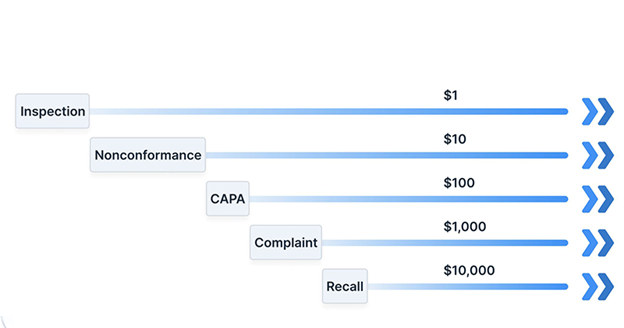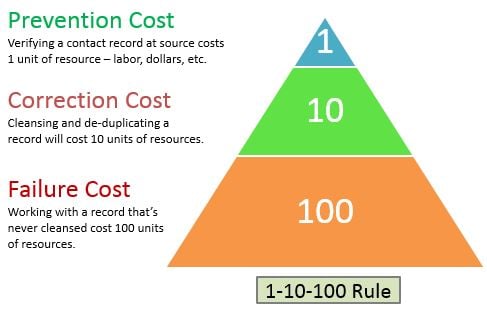What is the 1-10-100 Rule?
What is the 1-10-100 Rule?
Dr. Abdulrahman ALJAMOUSS
The concept of the 1-10-100 rule was developed by George Labovitz and YuSang Chang in 1992. Put simply, the 1-10-100 rule states that it costs exponentially more money to identify and correct data entry errors the longer it takes to find them. According to the 1-10-100 rule, it costs $1 to verify data as its being entered. It costs $10 to clean the data after the fact. And it costs $100 if you do nothing.

- $1: Verifying and correcting data at the start is the least expensive way to make sure your data is clean and accurate. This is the prevention cost.
- $10: Identifying and cleaning data after the fact is time consuming and resource intensive. Organizations may have to set up a team to validate the data and correct any errors, which costs money and can lead to lost productivity. This is the correction cost.
- $100: Bad data may flow between sources, creating a waste of time and resources. This is the failure cost.

So how does it work?
The 1-10-100 rule refers to the hidden costs of waste associated with poor quality.
To summarize
The 1:10:100 rule is not a tool to rectify bad data but rather a way of understanding the negative impacts bad data has on your business. It takes into account the butterfly effect of one misleading data that can multiply many folds over time. The immediate result can be something as simple as customers getting irritated or the staff having to work overtime for a pointless reason. In the long term, it can lead to detrimental customer reviews and bad brand reputation, which, if not checked in time, can even pave the way for the undoing of the company.
